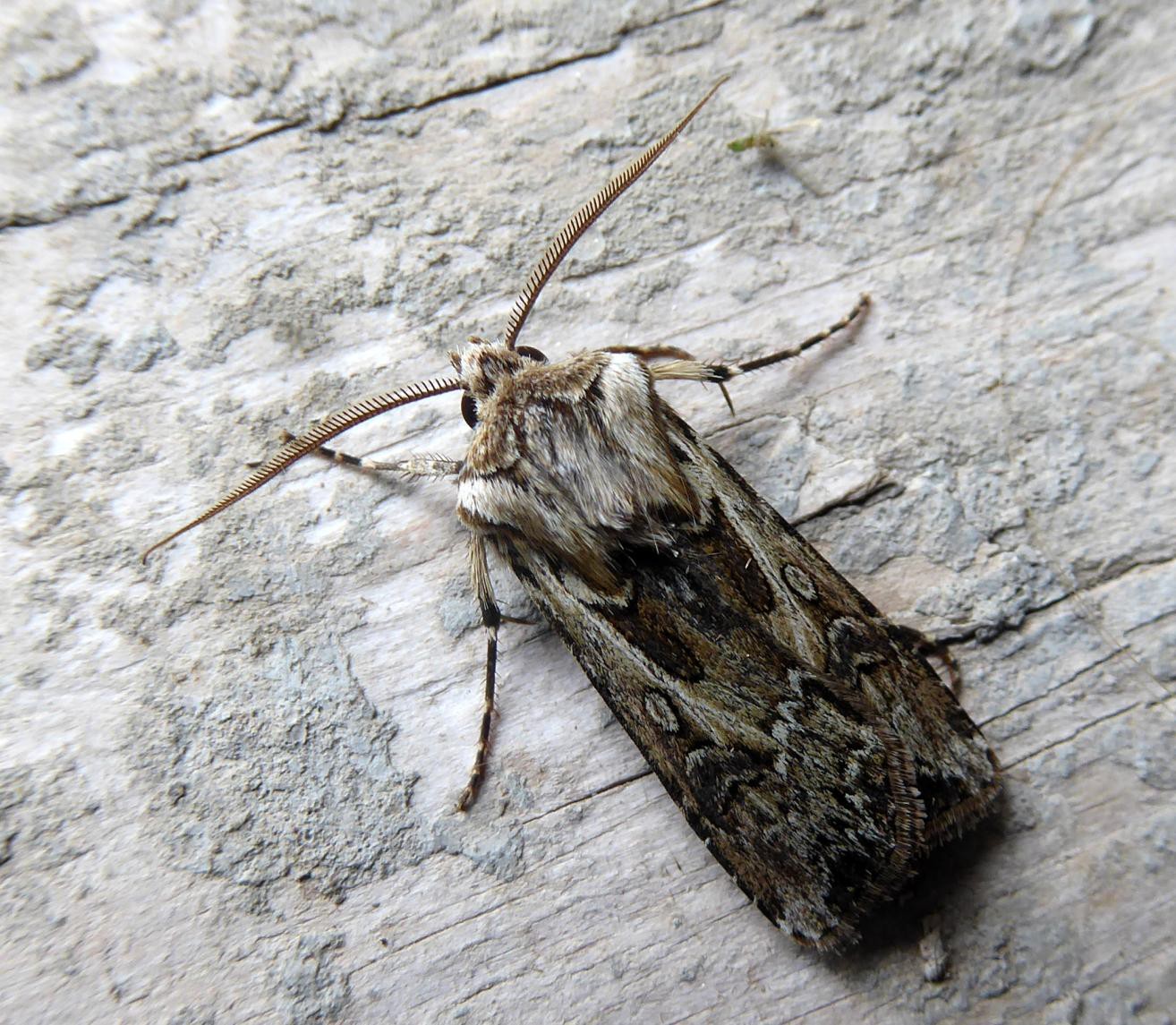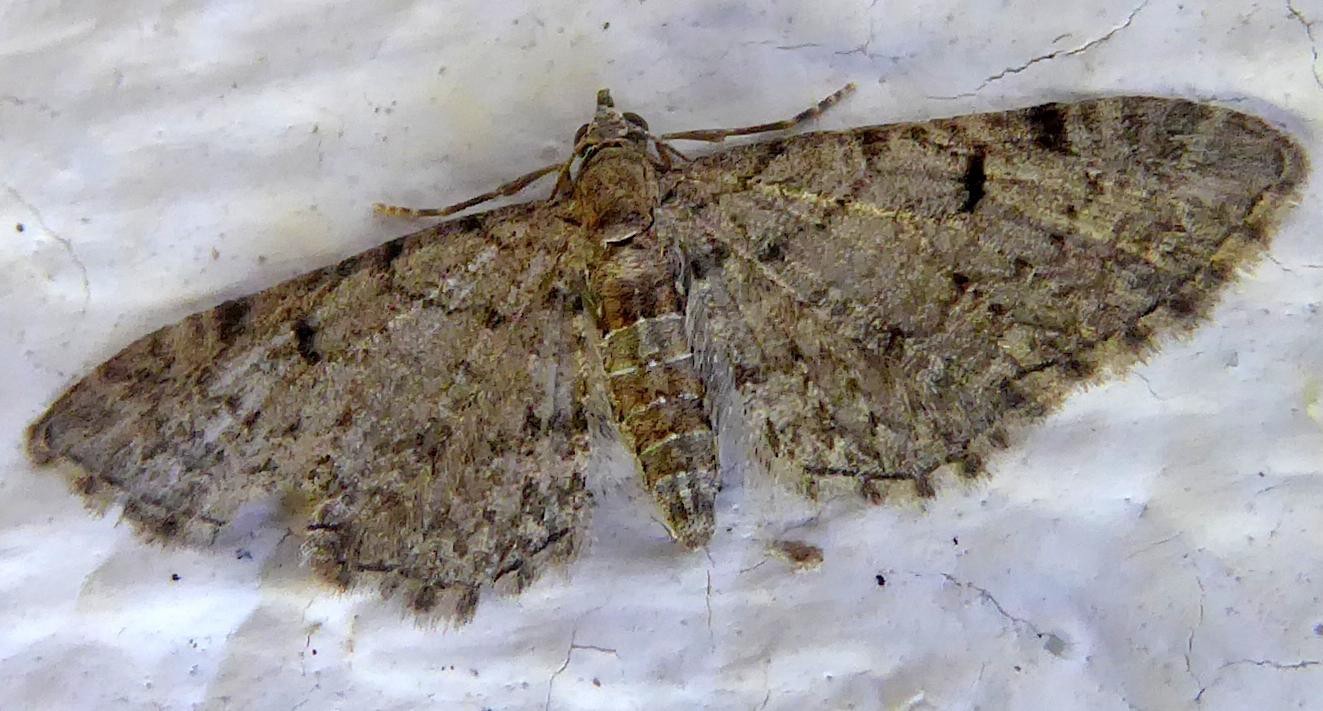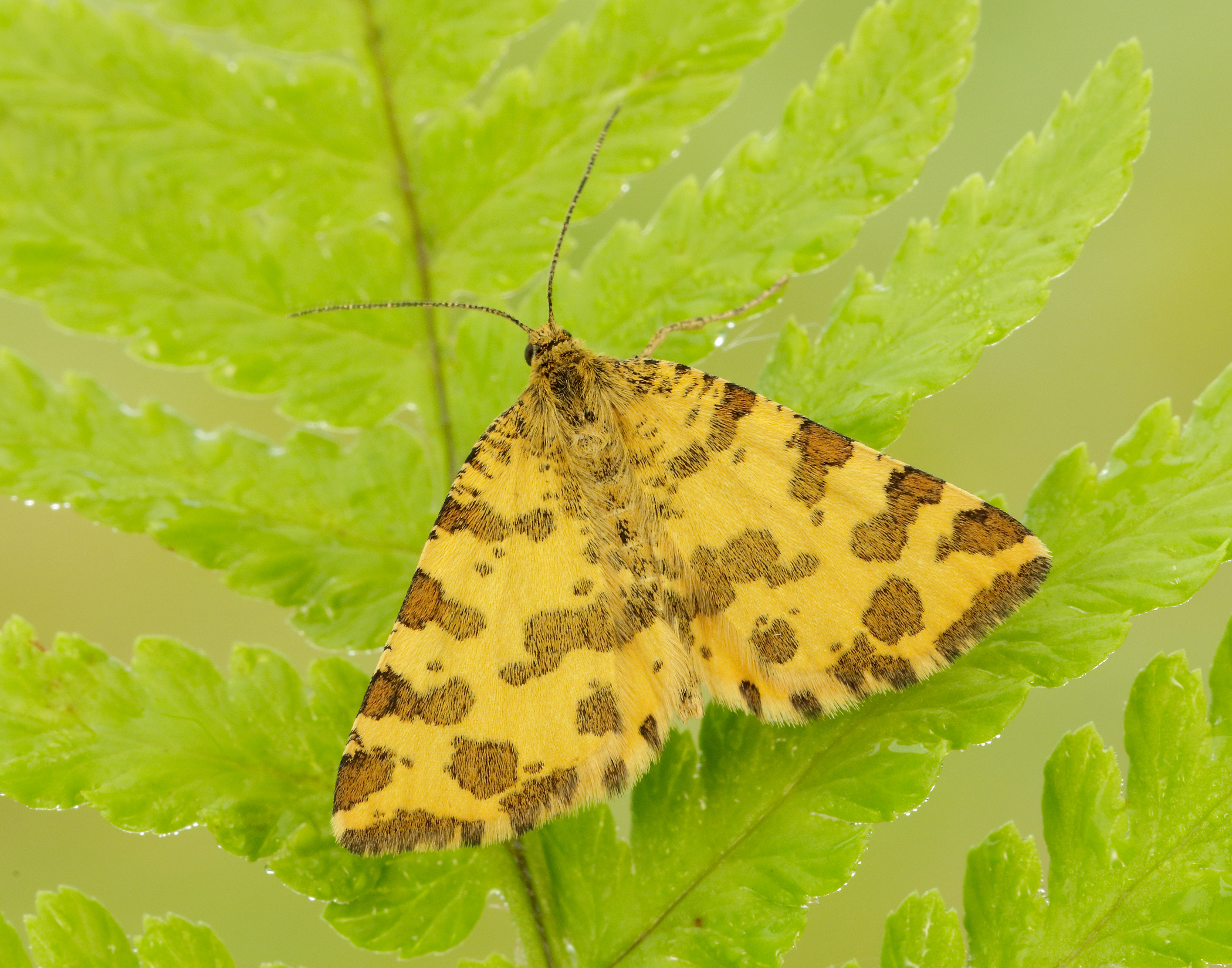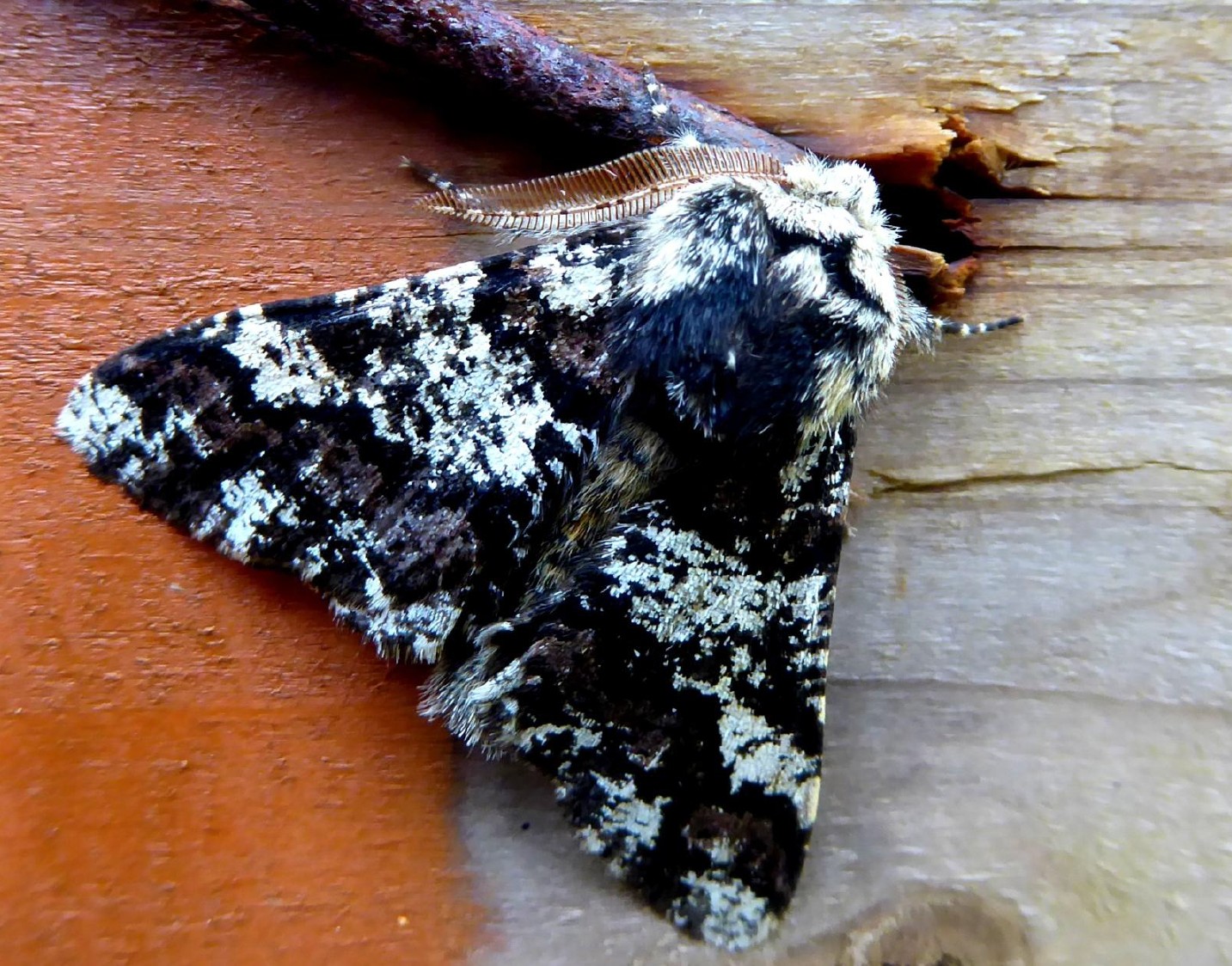Although I do not know who Archer was, this is a very good looking moth with characteristic pale shoulder flaps, very clear oval marks and the big dark ‘darts’ next to them. Although there are several other ‘darts’ this one is very well marked and easy to identify. This is a male with feathered antennae.
This is a moth that is very limited to a specialist habitat i.e. well draining, sandy soils. In D&G this means only parts of the coast as it does in most of Scotland, the exception being the inland sites along the shingle banks of the River Spey. It can be a common moth where it does occur and it is found to the very north of Scotland and into Orkney and the Hebrides. Here we have 38 records although 29 of those are from Torrs Warren and nearby. The others are from coastal sites such as near Kirkcudbright Bay and at Mersehead. There are two inland records from Mabie Forest and the Grey Mare’s Tail as well as this one from near Moniaive but these are likely to be strays.
The adult moth is on the wing from July to the beginning of September and although it readily comes to moth traps (up to 14 individuals) it frequently feeds at flowers such as ragwort. The grey-brown caterpillar looks like many of the species which live underground during the day. This dart feeds on the roots and lower stems of bedstraws, stitchworts and grasses at night.
There are quite a few coastal species like this one in our area such as, in order of rarity, the Coast Dart, the Crescent Dart (a west coast species and in Scotland only found in D&G), the Shore Wainscot, the Square-spot Dart and the Sand Dart (really an east coast species in Scotland).
It would be good to find some more sites for this beautiful moth.




